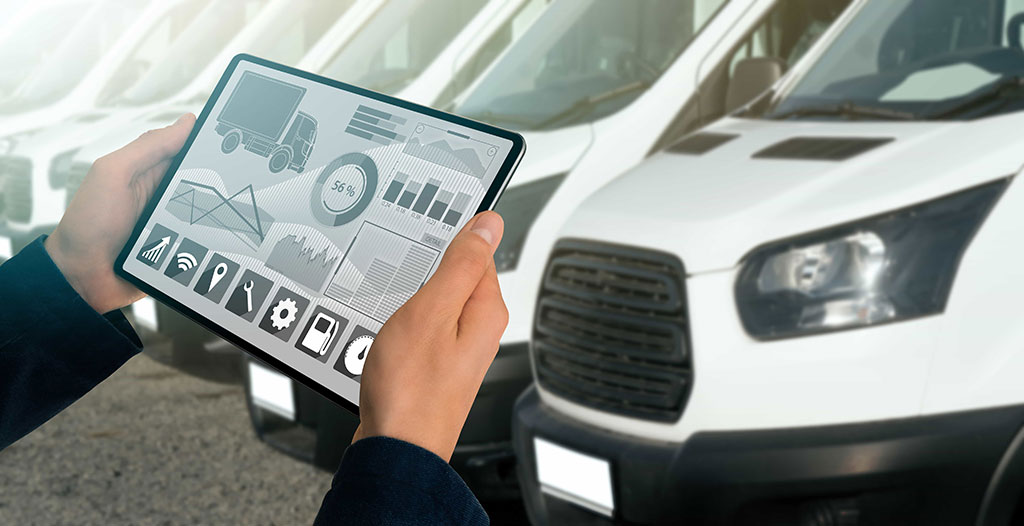Top 5 Ways Video Telematics Can Save You Money

There are so many reasons why fleet managers everywhere are using video telematics to help reduce their fleet costs. From giving you a truer perspective of events surrounding accidents to helping develop smarter drivers to lowering operating costs, video telematics can help reshape your business.
If you’re new to the world of video telematics, you can get up to speed with this primer we recently penned. But today, we’re going to dive deep into five ways this technology can help you reduce your costs across the board.
Savings #1: Lower insurance premiums
In a recent study conducted by CJ Driscoll & Associates, 31% of operators got a break on insurance rates thanks to fleet video telematics. This stands to reason, as the footage can be used in accidents to exonerate innocent drivers, while at the same time doubling as a teaching tool for fleet managers to help their drivers develop safer habits. Additionally, many insurance companies offer discounts to businesses who implement video telematics as part of a larger training and safety program.
Unfortunately, when there’s an accident involving a commercial vehicle, the driver typically gets pinned with the blame — even when it’s not their fault. But with video telematics, you get an unbiased, eye-witness account of the incident. Video telematics equipment like connected dash cams and side/rear/driver-facing cameras produces the visibility you need to insulate your fleet (and drivers) from bogus and fraudulent claims.
In recent years, crash-for-cash scams have become more and more prevalent. These are scams where fraudsters manufacture collisions with the intent of profiting from fraudulent insurance claims. Fortunately, video telematics can protect your fleet against these false and frivolous claims by capturing the incidents (or non-incidents, for that matter) on video.
Savings #2: Lower fuel costs
From highways to freeways and all the streets in between, roads are becoming more and more congested. This obviously can lead to more stop-and-go traffic, idling, quick accelerations, and hard braking. All of these factors can lead to poor fuel consumption. But with video telematics, you can use a variety of internal metrics to help you identify the most inefficient vehicles and drivers. By helping your drivers slow down and eliminate gas-guzzling behaviors, you can conserve up to $1.17 per gallon, according to the Department of Energy.
Additionally, video telematics can help cut down on the amount of wasted miles your trucks are traveling by finding better, more efficient routes. And better routing means your trucks are getting from Point A to Point B in fewer miles. Add this all up, and you have more money in your coffers every quarter.
Savings #3: Fewer accidents
Whether or not an accident was your driver’s fault doesn’t preclude it from offering valuable, teachable moments.
Using video can help drivers become aware of their blind spots and enhance their skills and awareness on the road. This also allows you to customize driver training rather than opt for a generic, one-size-fits-all approach. This ensures each driver gets specific training and learnings that deal directly with their own unique situation.
Additionally, video telematics allows you to be proactive rather than wait until an accident happens. For example, if a video clip shows a driver is following too closely, or perhaps internal driving data reveals a driver has a penchant for hard braking, then you can coach the behavior immediately. Pair this with deep learning analytics software to help build predictive risk modeling of driver behavior in real time. No more having to wait for the next training cycle to arrive.
Plus, if drivers know beforehand that they’re being monitored, they’re more likely to drive safer, be more conscientious, and avoid poor behaviors like speeding, taking fast corners, and braking too hard.
Conversely, video can offer trainers and coaches an easy way to praise good behaviors and exemplary driving habits. All of this works together synergistically to build trust and rapport among drivers.
Savings #4: Reduced wear and tear
Eliminating unnecessary wear and tear on your vehicles can go a long way toward reducing costs for your business. Thankfully, video telematics offers all the insights and data you need to correct the bad driving habits that can wreak havoc on your bottom line. For most fleet managers, this involves coaching their drivers to ease up on the pedal.
Aggressive driving techniques like hard braking and accelerating can place unnecessary stress on engine components like the chassis or transmission. The harder these vehicles are driven, the more frequently they’ll need repairs — and vehicles that need repairs are vehicles that aren’t on the road making you money.
Encouraging and coaching safer driving is easy with video telematics. It means your drivers are driving at more moderate speeds and making fewer sudden stops and starts. This means brakes won’t wear out so quickly, which ultimately preserves the life of your vehicle.
Savings #5: Fewer incidents of vehicle theft
Protecting your business from the risk of vehicle theft is something most fleet managers have to deal with nowadays. Fortunately, the presence of cameras is a natural deterrent. But in those times when a break-in still transpired, you’ll have the video hardware to pinpoint what took place. As an added benefit, having high-quality video footage of the event will go a long way toward helping law enforcement identify the suspects.
Video telematics is helping companies all over the globe protect their drivers, cut costs, and insulate their bottom line from insurance claims and settlements. At SmartWitness, we’ve been providing in-vehicle cameras to fleet operators since 2007. We pioneered the first commercial-grade dash camera and today are recognized by industry authorities as a leader in the field of video telematics.
With so many benefits associated with this technology, you owe it to your team (and yourself) to take a deeper look at how SmartWitness and video telematics can improve your fleet management system.